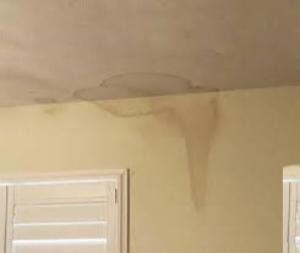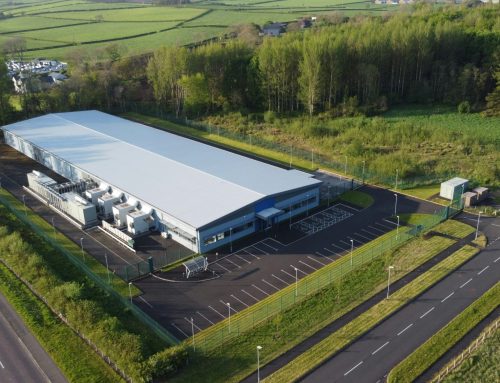Regarding building maintenance and  construction, roofing and waterproofing systems are fundamental to ensuring structural integrity and preventing costly damage. However, when these systems fail, identifying the root cause and implementing effective solutions requires the specialized expertise of a forensic investigator. In this post, we’ll look at some of the common causes of roofing and waterproofing failures and the role of a forensic investigator.
construction, roofing and waterproofing systems are fundamental to ensuring structural integrity and preventing costly damage. However, when these systems fail, identifying the root cause and implementing effective solutions requires the specialized expertise of a forensic investigator. In this post, we’ll look at some of the common causes of roofing and waterproofing failures and the role of a forensic investigator.
Common Causes of Roofing and Waterproofing Failures
A forensic investigator plays a pivotal role in identifying and analyzing roofing and waterproofing failures to help clients understand their cause and impact. Common failures include:
Material Defects
Material defects are attributed to manufacturing issues such as inconsistencies in quality or composition of them. Common examples include poorly-adhering shingles, roofing membranes lacking proper waterproofing capabilities, or corrosion-prone metal panels. Defective materials may not perform as expected under typical weather conditions, leading to premature wear and failure.
Poor Installation Practices
Errors made during installation can lead to issues including incorrect shingle or roofing tile placement, improper join and seam sealing, and inadequate flashing around roof penetrations such as vents and chimneys. As a result, leaks, water infiltration and reduced overall performance can occur.
Environmental Factors
Exposure to harsh weather conditions such as intense sunlight, heavy rain, snow and high winds can accelerate roofing and waterproofing wear and tear. UV radiation can degrade roofing materials over time, while freeze-thaw cycles can cause expansion and contraction that may lead to cracks and damage. Regions with high humidity, such as here in the Washington DC-DMV metropolitan area, or salt exposure are also environmental factors that can contribute to material corrosion and deterioration.
Lack of Maintenance
Regular maintenance is essential for identifying and addressing problem areas early. Neglecting routine inspections and repairs can allow minor problems such as loose shingles or blocked gutters to develop into more significant failures.
Structural Issues
Problems such as poor roof design, inadequate load-bearing capacity, or a building’s settling can affect roofing and waterproofing systems, leading to water pooling and leaks.
Related: The 5 Most Common Causes of Roof Leaks
Visible Signs of Waterproofing Failures
Visible damage often indicates a waterproofing issue. Building owners may see water stains on walls, ceiling or floors, and mold or mildew growth. Surface damage such as cracks or peeling of waterproofing materials, and structural issues such as sagging or warping of floors and walls, or efflorescence, a white, powdery substance on masonry can also be signs of waterproofing failures.
To identify waterproofing issues, a forensic investigator uses a variety of inspection and testing methods:
- Visual inspections to reveal obvious issues like cracks, blisters, and water stains.
- Moisture testing using tools such as infrared thermography to detect variations caused by moisture, and moisture meters to measure the moisture content in materials like drywall and wood.
- Water testing methods like flood testing that simulates rainfall to check for leaks, and spray testing, where water is applied to suspected areas to identify leaks.
- Inspection of hidden areas or behind walls or under floors using diagnostic tools like a borescope or endoscope. In some cases, core sampling or cut-out inspections are required to examine the waterproofing layers.
- Electric Leak Detection using a portable low-voltage scanning tool and this method complies with ASTM Guide D7877, which is the basis for ASTM Practice D8231.
The Role of a Forensic Inspector
A forensic inspector reviews the various aspects of the construction process including design, materials, and workmanship. They begin by conducting a thorough site inspection to assess any physical damage and to collect evidence through materials samples, structural element examination, and documentation of conditions contributing to the failure.
In addition, a forensic investigator analyzes relevant documents such as construction plans, building codes, and project specifications to determine if deviations from standards or errors in the design and construction phases occurred.
Expert analysis is another component. A forensic investigator has specialized knowledge and experience to interpret findings and establish causal relationships between construction practices and failures.
Following the analysis, the forensic investigator compiles a comprehensive report detailing their findings. The report typically includes a failure description, analysis of contributing factors, and recommendations for corrective actions, presented in a clear and objective manner. Technical explanations and visual aids are often included to support their conclusion. In legal proceedings, this impartial assessment as an expert witness can help resolve disputes between parties.
Först Consulting Group: Forensic Investigations for Roofing and Waterproofing Failures
By employing a structured approach to investigation of roofing and waterproofing failures, Först Consulting Group can accurately identify the root causes of these failures, evaluate their impact, and recommend effective solutions. Their process not only addresses immediate concerns, it also helps to prevent future issues and resolve conflicts between parties.
If you suspect a roofing or waterproofing failure in a building’s integrity, contact Först Consulting Group. We serve clients throughout Northern Virginia and the Washington DC metropolitan area. Select services are also available nationwide.




